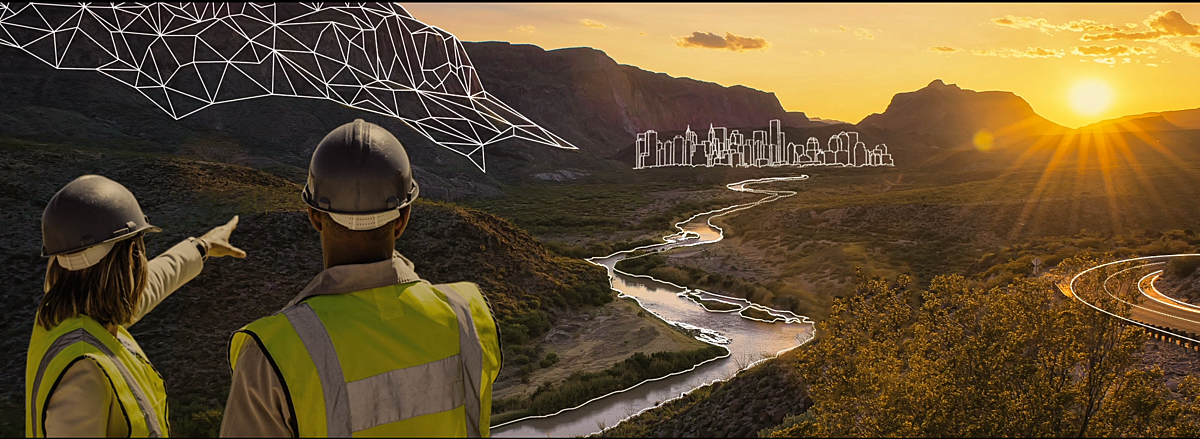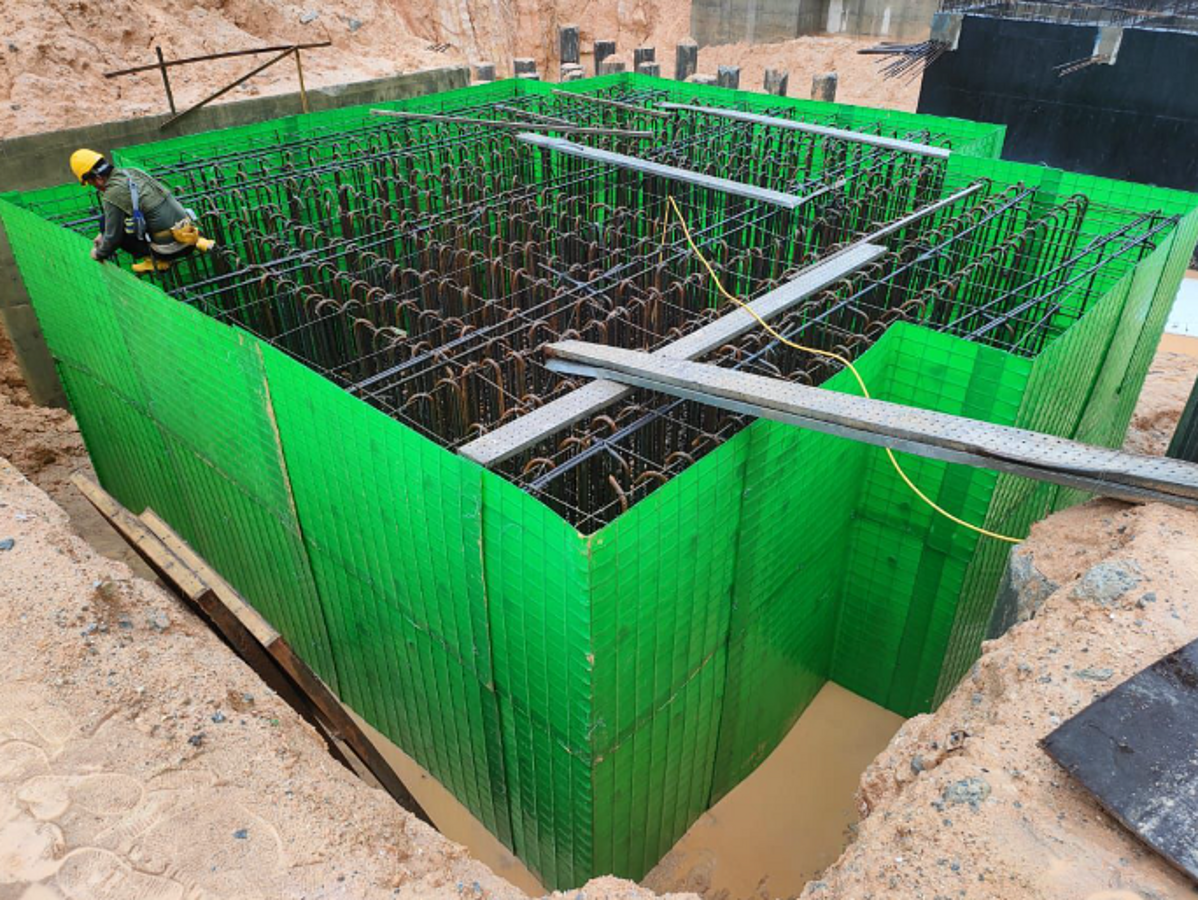Part 2
A group of all-Filipino mining engineers under the support of project subcontractor Paramina Earth Technologies, Inc. (PARAMINA) were greatly involved in the success of the Upper Wawa Pumping Station Water Access Tunnel project. These mining engineers developed and excavated an 8m wide x 7m high x 1,011m long tunnel with the highest considerations for safety, without a single lost time accident (LTA) accident and or rockfall incident. The project applied the New Austrian Tunneling Method following international tunnel design, plans and was remarkably ahead of the adjusted timeline upon its completion.
Part 1 of this article introduced the technical aspects and purpose of the project. In Part 2, we discuss the people involved, the challenges encountered, the innovations applied, and milestones achieved. Part 1 can be viewed here: https://www.philippine-resources.com/articles/2024/8/a-technical-overview-of-a-water-access-tunnel-construction-built-by-filipino-mining-engineers
Project Owner and Consultant
The mega-infrastructure “Wawa Bulk Water Project” (herein referred in our article simply as the Wawa Dam Project) is owned by WAWAJvCo Inc, a joint venture initiative between Prime Infrastructure Capital Inc and the San Lorenzo Ruiz Builders and Developers Group, the owner of the water rights in the area. WAWAJvCO engaged the services of AFRY as its advisor, an international leader in engineering and design.
Project Main Contractor/Consultant
A crucial component of the Wawa Dam project namely, the “Upper Wawa Pumping Station (UWPS)” Project was awarded to Prime Metro BMD Corporation (PrimeBMD), a subsidiary of Prime Infra in joint venture with BMD, one of the biggest privately owned contractors based in Australia. To ensure its successful execution, Lombardi Engineering, a Swiss multidisciplinary engineering firm specializing in underground and water infrastructure was engaged as the project’s designer and advisor by the contractor.
Project Tunneling Subcontractor
Following a comprehensive review of several bid submissions and site visits to assess the various bidders’ facilities, shop, equipment and technical expertise, the contractor selected PARAMINA as the subcontractor for the tunnel excavation of the UWPS project. Additionally, Paramina was entrusted with the Slope Stabilization Works, done prior to the actual tunnel excavation, that established a durable, all weather slope protection for the East and West Portal and the main access road, designed to last for a century.
Project Management Team
The senior project management, headed by a team of dedicated mining engineers with previous experience in tunneling, was instrumental to the success and punctual completion of the UWPS Main Access Water Tunnel Project without any Lost Time Accident. Their leadership and expertise were key to the project’s remarkable safety record.
Backing the senior management was another team of junior mining engineers who played a pivotal role in project initiation and completion. Additionally, mechanical and electrical engineers and technicians were integral to the equipment maintenance and operational support. They were at the heart of the tunnel operations, working round the clock to oversee shift activities. Work was 24/7, regardless of holidays and weekends. Their leadership ensured safe and efficient supervision of the skilled miners, mechanics, and electricians, and operations of a wide array of underground mining machinery and equipment.
First things First- UWPS East Slope Stabilization
Prior to the actual tunnel portal excavation, a team was formed to stabilize the slope above the east portal on March 14, 2022. Another team was formed to erect the temporary facilities, offices, equipment workshop and the construction of explosives magazines in preparation for the blasting works in the Tunnel. The Notice of Award and Notice to Proceed on the Slope Protection Works at the East Slope was received the following day on March 15, 2022 with a target completion date of May 30, 2022. There was also a slight setback due to contractor’s delay in excavating original natural ground profile down to its designed slope batter and benching, thus resulting in late handover of the East Portal’s designed floor elevation of 144masl, to the Subcontractor for it to start the installation of the tunnel umbrella using SDAs.
Start of Portal Excavation
On September 27, 2022, the project reached a significant milestone with the commencement of drilling and setting up the portal umbrella. This involved the installation of Self Drilling Anchors (SDAs) measuring R38mm x 6m in length, arranged in two rows, each spaced 200 mm from the outer edge of the Tunnel Portal’s designed crown. The installation process entailed alternate drilling and grouting of the SDAs until all 131 units were securely in place. These SDAs were drilled directly into their positions and grouted to serve as forepole support, enhancing the stability of the rock mass at the tunnel’s crown during portal construction. Following the geologists’ assessment that the rock mass rating at the portal ranged from 0-20 RMR, Lombardi’s recommendation was to proceed with excavation but using the breaker tool of an excavator, advancing in increments of 0.6m prohibiting the use of drilling and blasting. This approach allowed for the installation of SRS completion of the full-face excavation; the application of 400-mm thick shotcrete on the crown and sides of the tunnel portal, along with a 50-mm thick layer of shotcrete on the tunnel face, providing a temporary protective layer of support for miners while working in proximity to the unsupported face.
Innovations to the design introduced by Paramina
The initial design for the east portal “umbrella” tunnel crown support by Lombardi included the driving of 150mm diameter micro piles and up to lengths of up to 12m, intended to be drilled around the tunnel crown’s perimeter. While this system was accessible in other regional markets, including the Philippines, the local micropiling contractors were only equipped for vertical micro pile equipment installations therefore lacking the capability for horizontal applications.
Consequently, PARAMINA proposed to the Main Contractor’s Project Manager, Technical Director and to Lombardi the substitution of the micro piles to self-drilling anchor rock bolts. This switch to SDAs expedited the process and proved to be more cost-effective than the original micropile design. The SDAs were likewise recommended as the preferred rock bolts for support types 2, 3, and 4, more especially because of its simple and easy installation. The process of “drilling, pulling out the drill rod, and inserting a rock bolt” was eliminated and streamlined into a single step, thereby improving overall tunneling cycle time. In addition, the original plan included the installation of “Fiberglass Bolts” for temporary face support which was both costly and time consuming. PARAMINA suggested the application of quick-setting shotcrete to reinforce the tunnel face.
Tunneling Challenges
One significant hurdle in the project was the insufficient geological data along the entire length of the proposed tunnel, attributed to the limited diamond drilling done by the project owners. Only five drill holes were done throughout the whole 1,011m tunnel length which was conducted during the project’s pre-feasibility study. Consequently, Lombardi deemed had a low confidence in the quality of geological information. To manage this risk, PARAMINA adopted a timely approach of ordering tunnel supplies, particularly imported rock bolts, to avoid any surplus at the completion of the project.
Additional challenges included frequent hiccups in shotcrete mix deliveries by the contractor, impacting the shotcreting cycle. PARAMINA responded by deploying its own transit mixer trucks to expedite timely delivery and availability of the shotcrete mix. Another issue was the scarcity of clean drilling water leading to complications such as fouling of the jumbo drill’s rock drill, delays in drilling and shotcreting, and blockages of shotcrete machine slicklines which were addressed by sourcing water from nearby natural springs and groundwater inflow from drain pipes installed along the tunnel’s walls and crown.
The most daunting obstacle was the low availability of the Normet robotic shotcrete machine and the Sandvik Axera T08 Twin Boom Jumbo drill rig, which frequently paralyzed the tunnel work cycle. Faced with little alternatives, PARAMINA procured new machinery: a state-of-the-art XCMG Robotic Shotcrete Machine with a capacity of 30-50 cubic meters of shotcrete per hour and two units of the Furukawa FDR Twin Boom Jumbo Drill rig with man boom basket.
Tunnel Development, Milestone Break Through, and Handover
With the East Portal stabilized and fully installed with SRS, rock bolts and shotcrete, the real tunneling work began with drilling and full face blasting on the 22nd of December 2022. This marked the first day of the 290-day development timeline set for the tunnel to hole out the 1,011 meters with an average of 3.5m of tunnel advance per day. The anticipated breakthrough date was October 7, 2023, with an additional eleven days allocated for post-tunnel remediation works.
The much-awaited milestone, the tunnel breakthrough, occurred a month ahead of schedule on September 5, 2023. Finishing touches were applied, and the extended 1.011-km tunnel was officially handed over to the contractor on October 15, 2023, for final joint inspection.
Safety, Health, and Environment
PARAMINA recognized the importance of safety, health and the well-being of its employees and the protection of the environment, adhered to the strictest standards of Safety, Health, and Environment in the project. Different degrees of job hazards were identified in the project’s scopes, such as slope stabilization works at the newly excavated road cuts to make way to the tunnel and excavation of the Upper Wawa Main Access Tunnel.
In recognition of the impressive feat that was the project completion with no loss time accident (LTA), the President of WawaJVCo acknowledged the contribution of PARAMINA and its dedication to safety and environmental stewardship last July 27, 2023 during the milestone celebration of the project’s “One Million Safe Manhours with incidents as attested by DOLE Regional Officials on the same occasion.
Some of the environmental initiatives contributed by PARAMINA to the project included the provision of complete Personnel Protective Equipment (PPE), daily toolbox meetings and the construction of settling ponds outside of the portal of the main access tunnel to ensure that solid or liquid pollutants are effectively separated and disposed of properly, to name a few. PARAMINA also championed the recycling of scrap metal, hoses, lumber, and the like and ensured that garbage was always properly disposed of at the designated disposal sites.
Moreover, to control noise and vibration from blasting works, the use of Long Period delay detonators ensured that the maximum instantaneous charge (MIC) firing at any one time were controlled below the industry accepted vibration and decibel limits.
Remediation and Hand Over of Tunnel Project
Guided by the main contractor, PARAMINA’s emphasis was on three key remediation tasks: addressing the “drummy” sections in the shotcrete lining, performing rock bolt “pull-out” tests and the execution of “in-fill” grouting within the Support Type P section of the tunnel. The first one was done by breaking open the shotcrete lining identified by the Contractor’s QA/QC team, with an Excavator fitted with a moil point and then reapplying shotcrete to the designed thickness. The second remediation task involved performing pull-out tests on 10% of all the installed Rockbolt anchor supports along the tunnel’s full length. It is worth mentioning that each rock bolt tested passed the required standards successfully. Lastly, to address the inevitable voids left in-between the rock face and the SRS, in-fill grouting was carried out by the ChemGrout CG-542 Electro-Hydraulic grout pump, particularly along the section of the tunnel supported by Steel Rib Supports (SRS).
With the remediation tasks fully addressed and following another exhaustive and detailed joint inspection and review of the Subcontractor’s workmanship quality, the milestone final approval was formally acknowledged by the Contractor with the issuance of the Certificate of Project Completion.
Acknowledgments
The project’s success depended on the valuable cooperation among key stakeholders, especially the project owner, WawaJvCo and its project representative, Mr. Rey Bodano, the contractor’s project team, Prime Metro BMD, the Project Consultants and Designers, Lombardi and Afry, the Local Government Unit of Calawis and Sitio Apia, Antipolo, the Firearms and Explosives Office, Provincial and Regional Police Offices of Region 4A, Key Suppliers of Machinery, Equipment, Consumables, Explosives and the locals of Sitio Apia and affected Indigenous People of Antipolo City and finally the Paramina Management, Project Management Team, Supervisors and the men and women of the Paramina Project Team.










